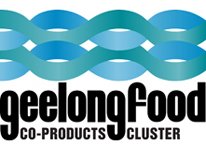
Geelong Food Co Products Cluster
Welcome to GFCC
About Geelong Food Co-Products Cluster
The G21 region is home to a huge diversity of agricultural production including grain, beef, lamb, wool, dairy, chicken, pork, as well as aquaculture, viticulture, floriculture and other horticultural products.
Our access to a major seaport, international airport, extensive rail and road infrastructure means we are extremely well serviced and supported by a thriving transport and logistics sector.
The region also has a mature food processing sector, farm inputs sector, agritourism industry and innovative research, education and services sector. These ‘post-farmgate’ sectors not only service the regional agricultural production sector, but also the agricultural production sector of a large part of south eastern Australia. We are very lucky!
The diversity of the industry and the breadth and depth of related sectors in our region is critical to our ability to serve the growing population and the expanding visitor economy.
Why Co-Products?
Geelong’s Food Manufacturing Industry is diverse and competitive. It has an annual (direct and indirect) regional economic contribution of around $1 billion and more than 2,500 full time equivalent jobs. The seafood, dairy, meat and poultry sectors make up about 60% of this economic contribution, and it is these sectors for which “co-products” are most relevant. Each Geelong business has specific strengths and technologies for the production of traditional, or core, product ranges which have been the key to their successful establishment and operation. However, there is a wide range of co-product opportunities that GFCC has identified and that can be best implemented by collaboration with other businesses; across (horizontally) and “up and down” (vertically) the businesses’ supply chains. Heightened concern over environment, efficient use of resources and business sustainability suggest that the time has never been more appropriate to take a serious approach to co-products.
The list of potential co-products is endless. Examples include:
Adding value to low value, or surplus, products (such as underutilised fish species, fish by-catch, lower value meat cuts and meat trim) through higher levels of processing, new recipes and new applications
By-products (possibly currently discarded or sold at a cost to the businesses), such as skins, feathers, bones, shells, tallow and other oils
Materials or resources for reuse or recycling, such as packaging, water and heat
Offal for use as niche edible product, stockfeed, fertiliser or energy
Adding value by further processing, extending shelf-life, or packaging enhancements.
GFCC develops and coordinates commercial business ventures around these co-product opportunities. The prospects are vast and progress over the past decade has been exciting and encouraging.

